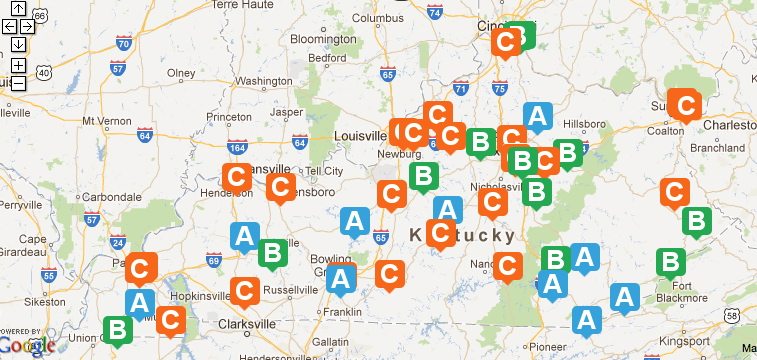Kentucky gets left out!
A few weeks after the Leapfrog Group released their Hospital Safety Scores, Consumer Reports (CR), the well-respected consumer protection organization, released their own version of a safety score based entirely on publicly available information, including Leapfrog’s data. Both organizations have also prepared more extensive hospital surveys focussing on quality of care. Leapfrog augments its own survey and safety score with information collected directly (and voluntarily) from the hospitals themselves. Otherwise both safety scores are based largely on the same information collected by Medicare with some interesting but minor differences. Consumer Reports’ Safety Scores include elements such as surgical-site infections, readmissions within 30 days for some diagnoses, avoiding unnecessary radiation from certain duplicate CAT scans, and good communication to patients about drug information at discharge. [I must confess though, I am still not altogether clear on what the distinction is between quality and safety measures. Perhaps someone can educate us in the comments.]
Unfortunately the Consumer Reports scores were not released to the general public for free– one must pay to subscribe to their commercial website. (Charging for their evaluation is how they stay independent!) In contrast, Leapfrog’s Safety Scores and Hospital Survey are both free to all. Nevertheless, I thought it would be instructive to compare the CR safety scores with those of Leapfrog, so for $6.95 per month, I signed up. Continue reading “Consumer Reports Releases a New Set of Hospital Safety Scores.”

